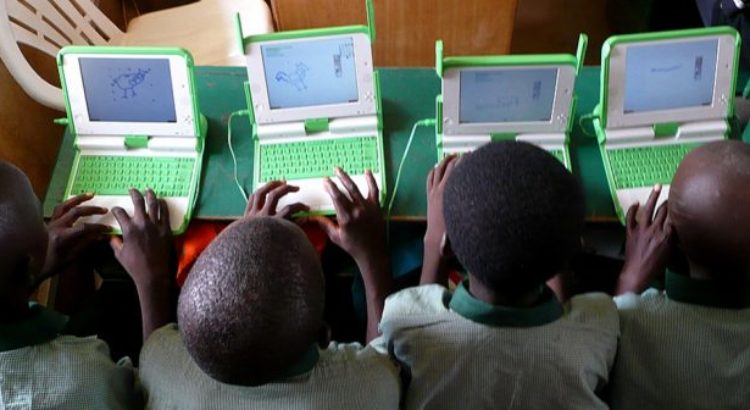Africa/Nigeria/By Kathryn Quelle/Source: www.borgenmagazine.com.
Boko Haram is a militant group in northern Nigeria that wants to institute Islamic law. The group also operates in Chad, Niger and Cameroon, but it originated in Nigeria in the late 1990s. The ongoing Boko Haram insurgency officially started in 2009, and since then militants have killed at least 20,000 people. The violent attacks have also displaced about two million Nigerians, with little chance of them being able to return home in the near future.
Mass internal displacement has a large impact on a country’s economy as well as its resources and living conditions. Displacement also greatly affects education. An estimated 952,029 Nigerian children have been displaced with little or no access to education because of the Boko Haram violence. At one point, the U.S. Embassy in Nigeria reported that only 28 percent of primary age children attended school in Borno state in northern Nigeria, as opposed to 97 percent in most parts of southern Nigeria.
In the local Hausa dialect, Boko Haram means “Western education is forbidden” and the quality of education in Nigeria will suffer if the group succeeds in their goals. In 2016, Human Rights Watch reported that Boko Haram had deliberately killed more than 600 teachers. Attacks in northern Nigeria have also destroyed more than 900 schools and forced at least 1,500 to close.
In combination with local NGOs, the U.S. Agency for International Development (USAID) launched the three-year Education Crisis Response (ECR) program in 2014 to address the fractured system of education in Nigeria. According to USAID, the program’s goal was to “expand access to quality and protective non-formal education and alternative education opportunities for out-of-school children, ages 6 to 17.”
Results in the Classroom
During ECR’s tenure in Nigeria, USAID partner Creative Associates International established more than 1,400 non-formal learning centers and more than 700 formal schools. Creative reached more than 80,000 children, 23 percent more than its target of 65,000. USAID’s final report found that 47 percent of the children reached by the program had never attended school before.
When ECR was launched, USAID performed a baseline assessment. The agency found that 64 percent of the children scored at zero level for Hausa and 50 percent scored at zero level for English, meaning the children could not even recognize letters from the languages. After three years, USAID’s endline assessment found that 49 percent could read Hausa and 37 percent could read English, showing significant improvement.
Besides substantially raising literacy rates in both Hausa and English, ECR also addressed mathematical knowledge. At the beginning of the program, 40 percent of children could not recognize the numbers 1-9. At the end, the same percentage were able to perform basic mathematic functions.
Beyond the Classroom
Beyond simply improving education in Nigeria, the learning centers set up by the program also provide meals and help students get to and from school. For example, ECR established 12 non-formal education centers specifically for children with physical disabilities, and the program distributed wheelchairs and crutches to the students. These 12 centers enrolled 539 children over three years and, in addition to basic knowledge and skills, the centers taught children vocational skills that they can utilize even after the program has ended.
The ECR program also focused on children’s psychosocial development. Many of the children in the program were displaced due to attacks on their homes and villages, leaving them traumatized. USAID recognized that children have a hard time learning when their fears and traumas are not addressed, and it trained facilitators on how to teach children sensitively.
Facilitators encouraged positive, interactive student-teacher relations and used group exercises to encourage children to make friends and interact with each other. Within local communities, organizations also encouraged spreading messages of peace. ECR director Ayo Oladini said, “We make sure that we don’t create any more trauma, either for these children or within the community where they live.”
Ensuring the Continued Success of Education in Nigeria
Throughout its tenure, ECR was supported by Nigeria’s state and federal governments. Officials helped determine which communities to focus efforts in, developed training manuals and sat in on classes. Every learning center established also had two local government education officials assigned to mentor teachers.
Nigeria’s government further demonstrated their commitment to education and ensuring ECR’s continued success by implementing transition plans worth $287,709 in its 2017 budget. The budget has been used to establish 100 more non-formal learning centers following ECR’s model and train more than 8,000 formal school teachers in conflict-sensitive education. At the end of the three years, five Nigerian state governments separately promised to replicate ECR’s non-formal education model.
In addition to government support, ECR mainstreamed 30,154 children who passed its end-of-program exam into formal schools to ensure the children’s continued success. ECR also provided them with additional free scholastic materials. Even though the ECR program has ended, the program has re-established quality education in Nigeria and helped a lot of kids get back to school.
Source of the notice: http://www.borgenmagazine.com/school-fees-in-africa/








 Users Today : 21
Users Today : 21 Total Users : 35460152
Total Users : 35460152 Views Today : 35
Views Today : 35 Total views : 3418818
Total views : 3418818